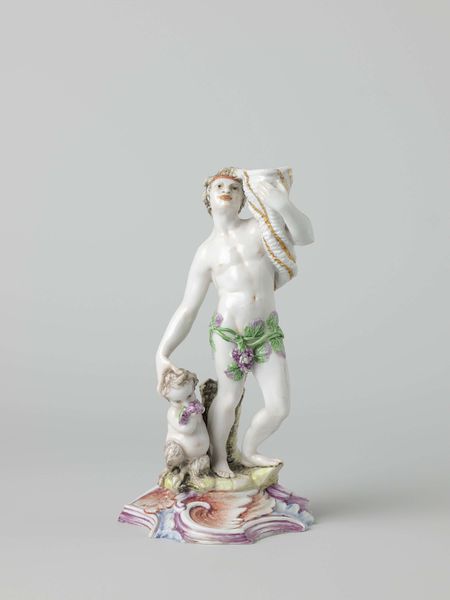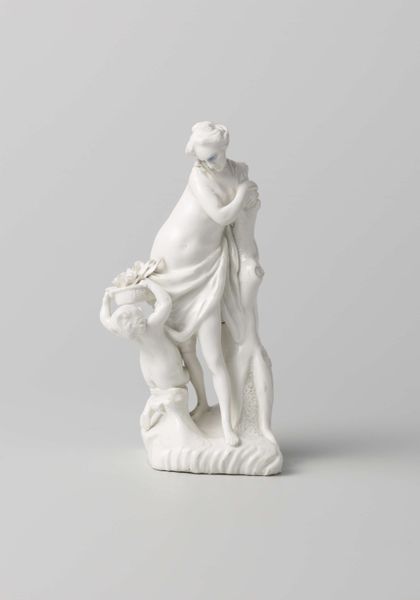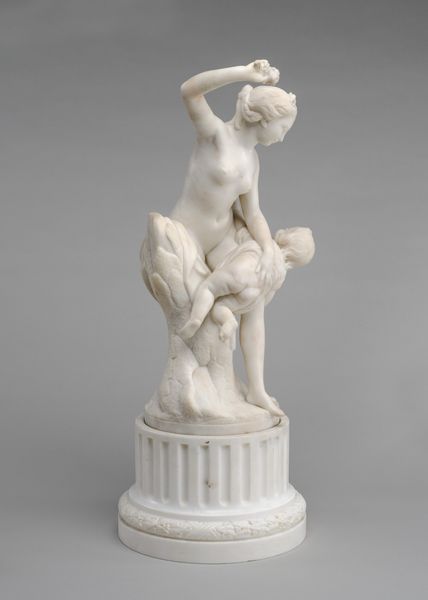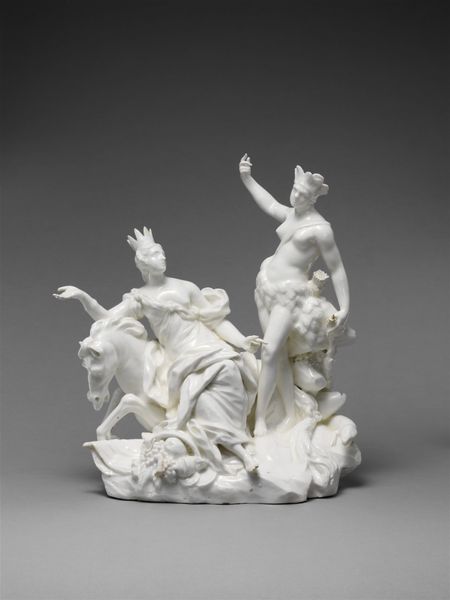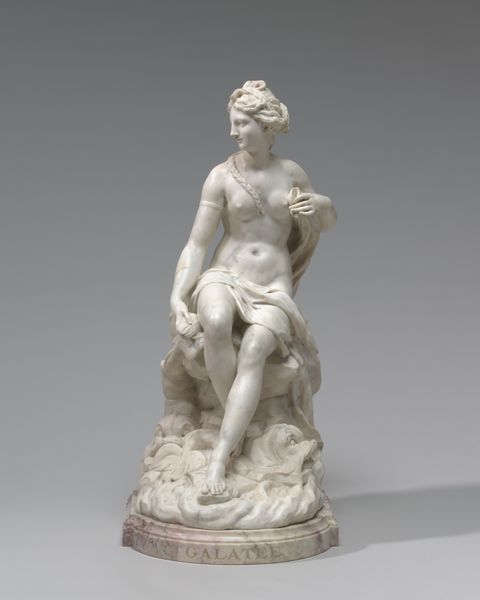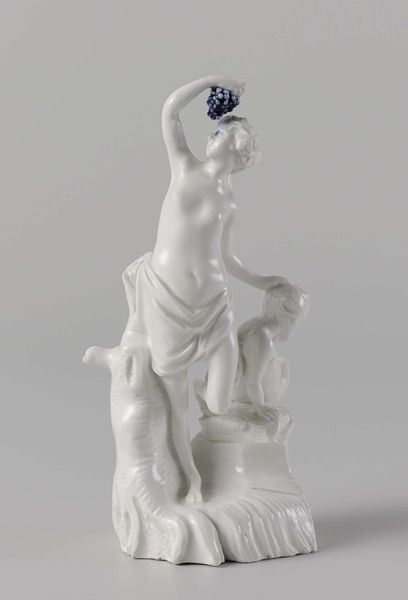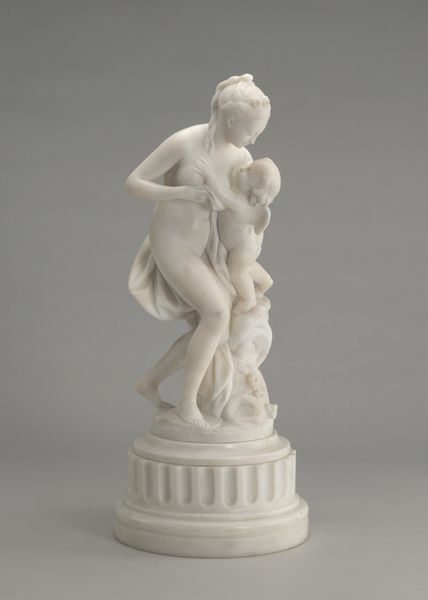
porcelain, sculpture
#
allegory
#
porcelain
#
figuration
#
classicism
#
sculpture
#
nude
#
rococo
Dimensions: height 20.3 cm, width 8.3 cm, depth 9.1 cm, width 7.4 cm, depth 7.8 cm
Copyright: Rijks Museum: Open Domain
Editor: We are looking at "Venus," a porcelain sculpture made around 1764 by the Weesper porseleinfabriek. Its bright white materiality strikes me; there's a beautiful tension between the smooth Venus and the rough texture of the rock-like base. What can you tell me about it? Curator: This sculpture offers a compelling study in form. Note how the artist juxtaposes the curvaceous figure of Venus with the angularity of the cascading water and rocky outcrop. It’s a strategic play with contrasting lines to create visual interest and direct the viewer’s gaze. Editor: It does make you look at everything. So the artist is not only showing us a mythological scene but really using shapes and composition. Curator: Precisely. Observe the modulation of light across the porcelain surface. The smoothness accentuates the Neoclassical ideals, an evolution of Rococo sensuality toward a more intellectual form. Editor: That’s really fascinating, I never really thought that something in porcelain could be Neoclassical. Are you saying it blends Rococo and Neoclassical elements? Curator: It occupies a transitional space, a negotiation between two aesthetics, reflecting the broader currents of its time. The attention to detail—the delicate rendering of her hair, the fluid lines of her body, the carefully rendered water—reveals an intention to appeal to the viewer’s sensuality while maintaining formal order. Editor: This has given me a lot to think about. I always considered the material separate from the form itself. Now, I understand how the artist brings these elements together into one cohesive artistic statement. Curator: Indeed, through a formal lens, we unravel the dialogue between material, technique, and historical context, deepening our understanding of its aesthetic and cultural value.
Comments
No comments
Be the first to comment and join the conversation on the ultimate creative platform.


